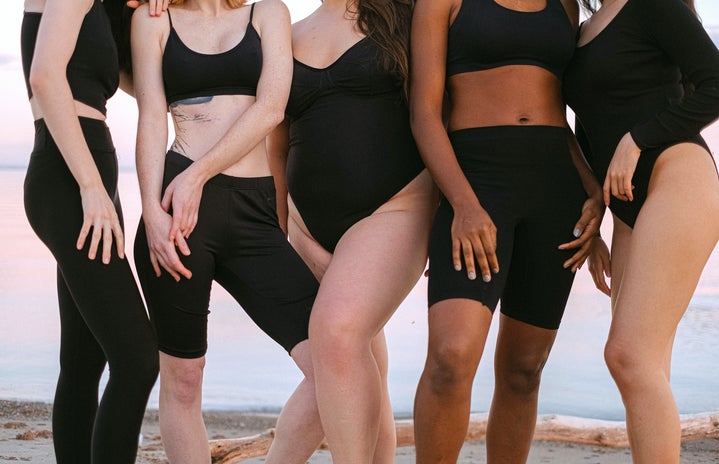Fashion reflects cultural behaviors over the decades, which have been transformed by means of feminist, political, ecological, or anti-racist ideals. We can demonstrate our personality and values, conveying our beliefs through brands, colors, and fabrics.
The movement was influenced by activists’ struggle and manifestations that resulted in the transcription of wishes for freedom, and individual and cultural expression. From the Middle Ages, with the emergence of tailors, to over the next decades, clothes have passed by an evolution that transformed the simple “dressing” into questions of society.
Some fashion landmarks were from the 1930s to the present day. In the 30s, Hollywood actresses represented women’s fashion with dresses and skirts, and fabrics such as silk and satin to bring out sensuality.
1940, a period marked by the Second World War, brought influences that marked the world, and fashion was also renewed. The outfits look similar to the men’s uniform, and with the scarcity of resources, the post-war period turned to the reuse of fabrics. But, through the collection called “New Look”, Christian Dior brought to the 50s a different idea from the previous decade. With a defined waistline and pleated skirts, the “hourglass body” was designated.
The 60s were a turning point in the fashion world since the clothes of previous eras were made to respect masculine and traditional customs. However, with the strength of the feminist movement and a new perspective brought along with the contraceptive pill, new pieces and greater participation of women were conquered.
One of the most controversial pieces that emerged was the miniskirts. They became popular with the stylist Mary Quant, who also spread the use of colored tights and ribbed knits, classics of the time. It was a democratic and open fashion, which today is a symbol of women’s struggle.
In this same period, the hippie movement began to emerge and women’s liberation was installed in the United States: a political alignment that represented the strength of women, with protests and a symbolic burning of bras, corsets, magazines, and beauty items, to untie traditional customs of society.
With the rise of counterculture movements in the USA in the 1970s and the Vietnam War, young people around the world protested for greater individual freedom through Flower Power and Peace and Love. The idea of a unisex and authentic fashion grew stronger during this period, with the use of jeans, ethnic prints, handcrafted and thrift store products, in addition to greater concern for the environment. As a result, women also began to earn their rights solidly.
While the 80s were noted for exaggerations of shapes and colors influenced by music artists like Madonna, Prince, and Michael Jackson, the 90s were the boom of Top Models, like Kate Moss and Cindy Crawford, and tv series that marked lives, like Friends and Sex and The City. These represented the style with pieces like mom jeans, scrunchies, baguette bags, plaid prints, and slip dresses. At the same time, grunge arrived with force, promoted by teenagers who grew up watching MTV, and the It Girls had to share the space with the sloppy guys. Today, fashion in the 90s has returned and is part of fashion trends.
The fashion industry revives trends every year, with new iconic combinations and brands that bet big on fast fashion (like Renner, Forever 21, Zara, and Shein) to replicate and sell what is most consumed from renowned collections. On the other hand, the slow fashion movement, which is increasingly adhered to, seeks to rethink the consumption of clothes, aiming at sustainable fashion and valuing local production.
Since 2017, Brasil Eco Fashion Week has brought fashion and sustainability together. The non-profit event features fashion shows, showrooms, and workshops by carefully selected brands to promote debates around topics such as organic cultivation, upcycling, recycling, body diversity, and inclusion.
Fashion as a protest has been gaining strength, especially during Fashion Weeks. Far from being a new movement, 50 years ago, the stylist Zuzu Angel presented her parade protest in New York against the military dictatorship in Brazil.
Recently, a controversial accessory became a hit after New York Fashion Week and has aroused the interest of fashionistas: the balaclava. Historically, balaclavas were associated with military use. But the accessories hype during the Northern Hemisphere winter has raised debates about racial and religious privilege. While for white people it can be a simple accessory, for black people it can generate episodes of racism. For Muslims, comparisons to the hijab expose the fine line between cool and oppressive. Complicated, right?
On the other hand, at São Paulo Fashion Week 2016, Ronaldo Fraga’s show featured transgender models parading and verbalizing their fight against transphobia. And in 2018, the Time’s Up movement shocked the film industry with reports of sexual abuse and harassment in Hollywood. Actresses, producers, and directors wore black looks during the Golden Globes in 2018, showing their positioning and bringing visibility to the subject.
Campaigns like these bring a little hope for a more inclusive and egalitarian fashion. Although female empowerment has been present since the use of miniskirts and pants, the fashion industry is far from being represented in leadership positions.
While fashion brands promote an inclusive discourse in specific campaigns but do not cover a complete collection for black, yellow, fat, disabled, and indigenous women, taboos and standards will stand out.
———————————————————————-
The article above was written by Sophia Demarchi and edited by Laura Enchioglo.
Liked this type of content? Check Her Campus Casper Libero’s home page for more!



